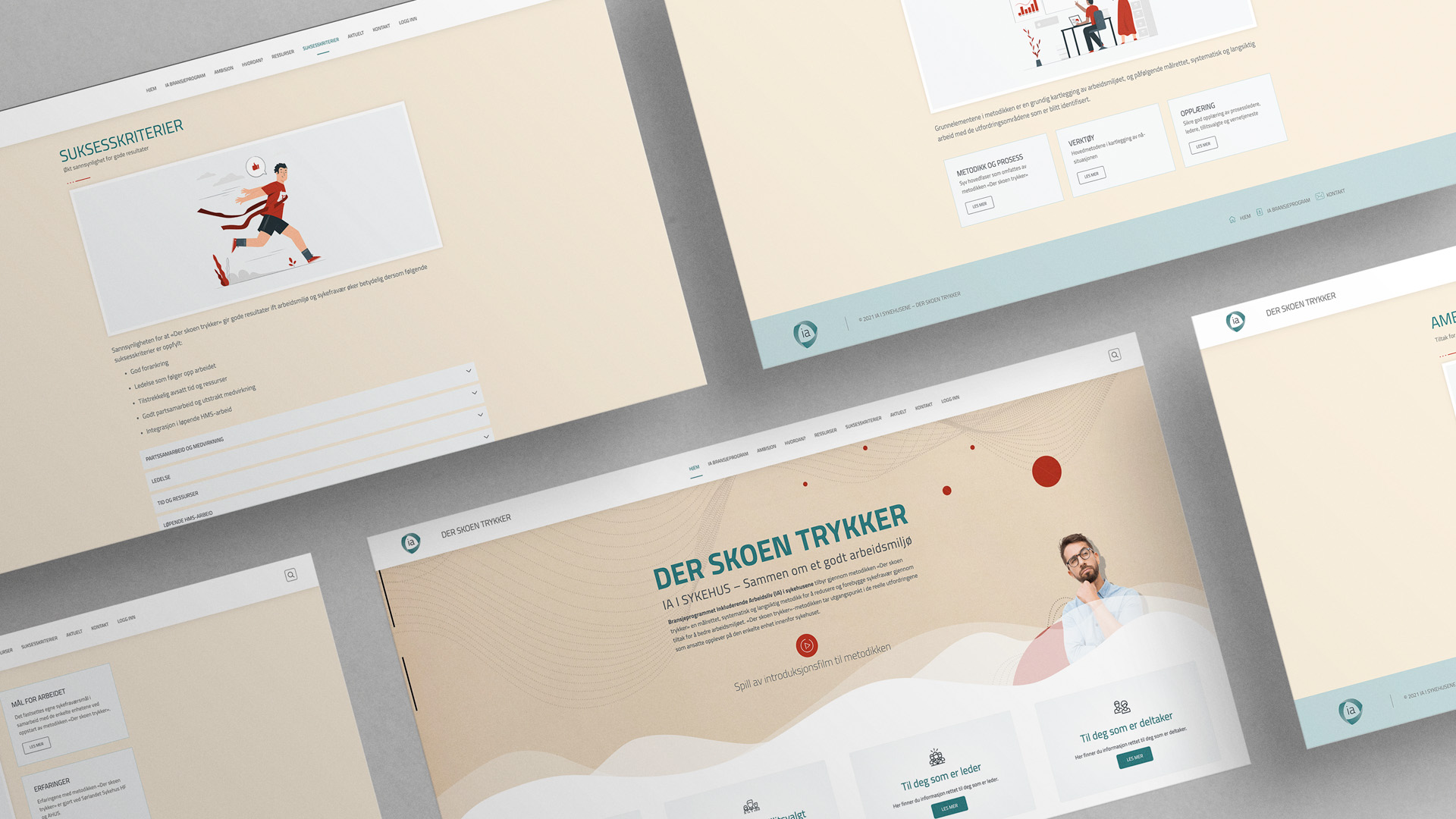‘Where it matters most‘ (in Norwegian: ‘Der skoen trykker’) is developed by and for the hospital sector, and aids employers in creating a health-promoting and adequate work environment. This is achieved through close collaboration between employees, union representatives, and safety representatives in all Norwegian hospitals. Since its national initiation in 2019, the Industry Program IA in hospitals has been refining ‘Where it matters most’ in partnership with all healthcare units that have adopted the methodology.
‘Where it matters most’ aims to ensure that efforts in operational management are directed towards the most important factors for maintaining and developing a positive work environment. Leadership, structured collaboration between relevant partners, and active employee involvement are the key elements of this concept.
The method consists of four phases:
1) Align and plan out the work
2) Map out and analyze the work environment
3) Define goals, develop and implement measures
4) Follow up, evaluate, and adjust
Though the phases are carriued out chronologically, they do partially overlap. Some units complete the four phases within 6 months, while others use several years to achieve their set goals. Regardless, working towards bettering the work environment is a continuous effort.
The work with 'Where it matters most' never ends - maintaining a good work environment is something you have to work towards every single day.
In collaboration with the Industry Program IA in hospitals, Specifique has developed tools used in the implementation of ‘Where it matters most’. Examples of these are dialogue mats for collaboration, dialogue mats for analyzing the current work environment, and action cards used to develop effective and specific measures for the individual healthcare units.
The website functions as both a platform for information about the project, and as a channel for knowledge and sharing experiences.
After adopting 'Where it matters most', several departments have reported increased employee satisfaction, as well as reduced absences and sick leave.
Oslo University Hospital (OUS) is a great example, where the department, with support from the process guide, has continuously worked on areas for improvement, and developed effective measures that strengthen the work environment and reduce overall sick leave. Read the full story here.
Sick leaves are notably less prevalent. Team mobility has increased; staff members can now seamlessly fill in for one another. We’ve achieved better oversight and control.







